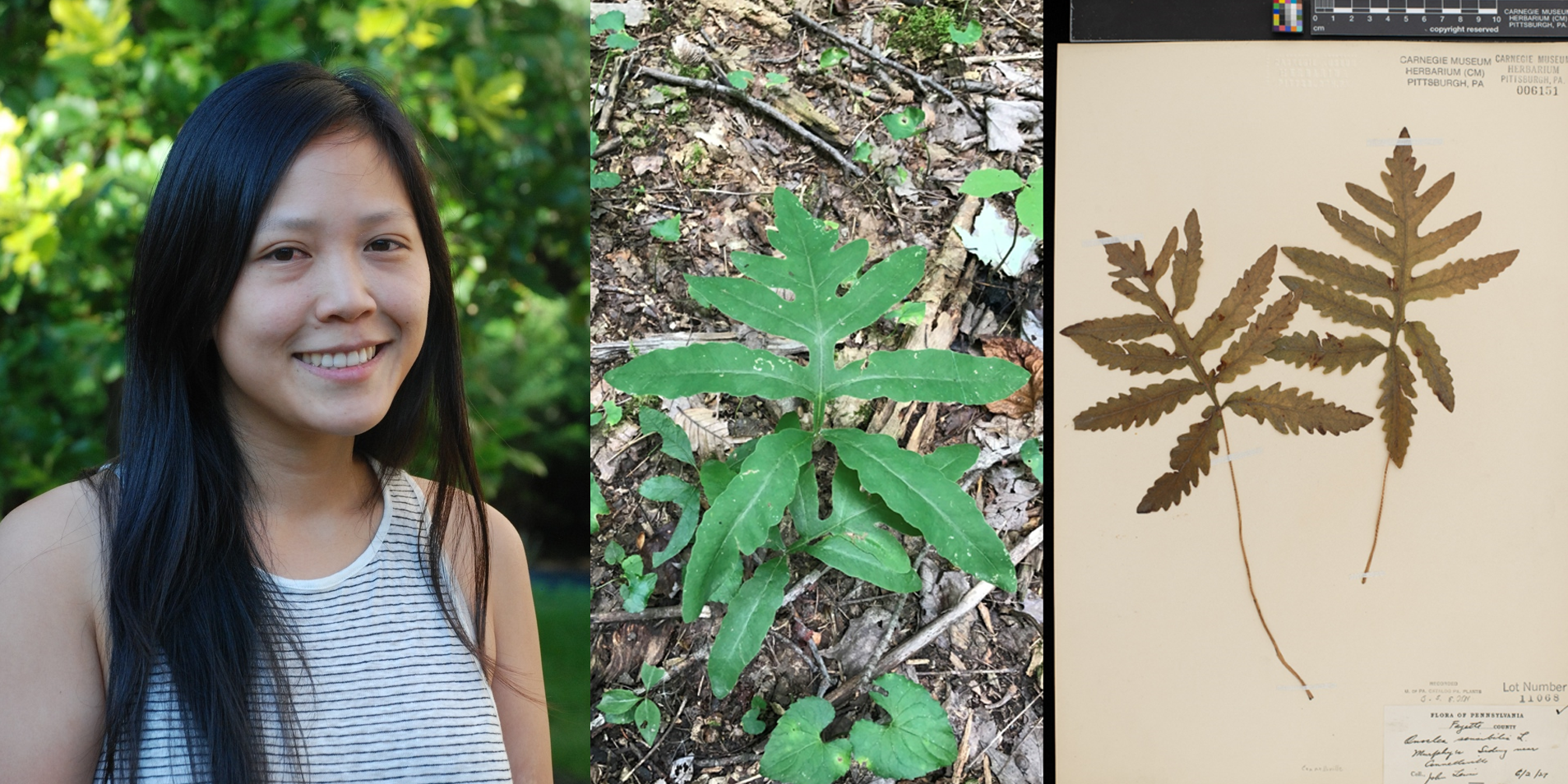
Moriarty Science Seminar: Integrating the living and the dead: how functional traits can improve our understanding of early Cenozoic fern evolution
March 14, 2022, 12:00 pm - 1:00 pm
Online
Event Navigation

R.W. Moriarty Science Seminar Presents: Integrating the living and the dead: how functional traits can improve our understanding of early Cenozoic fern evolution
Speaker: Molly Ng, Carnegie Museum of Natural History
Abstract:Plants have different economic strategies to grow, survive, and reproduce. In leaves, these strategies are important in producing energy for the entire plant. Leaf mass per area (LMA), the ratio of leaf area to dry mass, is one way we can compare different strategies and has been shown to provide valuable insights about relative growth rates, productivity of plants within their environment, and even evolution. Ferns are important environmental and ecological indicators yet are not as well studied as angiosperms. The majority of modern ferns are considered ecological opportunists, hypothesized to have evolved as a response to angiosperm dominance ~55 million years ago, which also coincides with early Cenozoic climatic events. It is unclear whether ecological opportunity or climate is responsible for modern fern radiation, but LMA may provide insights into ecological opportunity. Using collections, both living (Powdermill Nature Reserve) and dead (herbarium and fossil specimens), Molly Ng estimates LMA across ferns to test whether “new” ferns strategize differently from “old” ferns. She determines plant response to atmospheric carbon dioxide and temperature, and tests phylogenetic conservation of traits across lineages. Finally, she introduces the work she is doing with fossils, which will ultimately improve our understanding of trait evolution and function within ferns.
.
